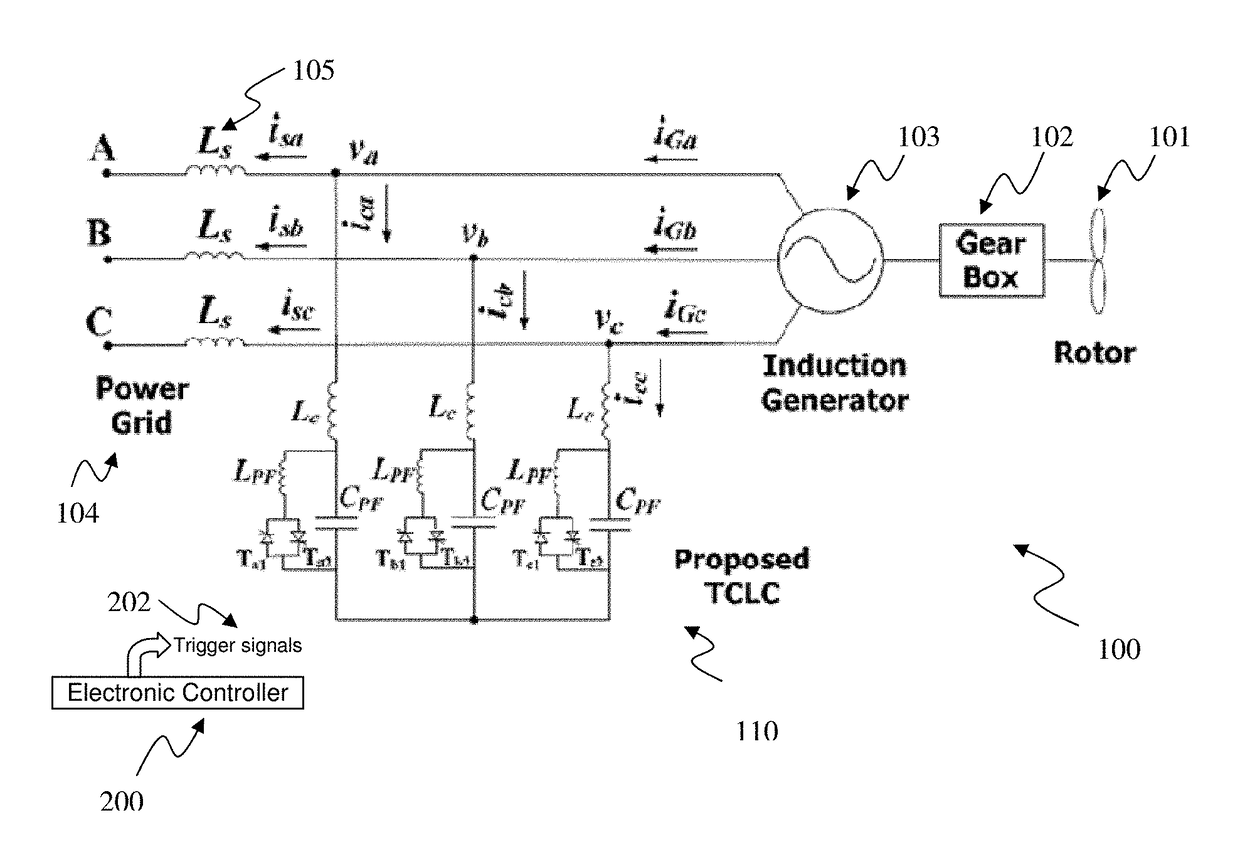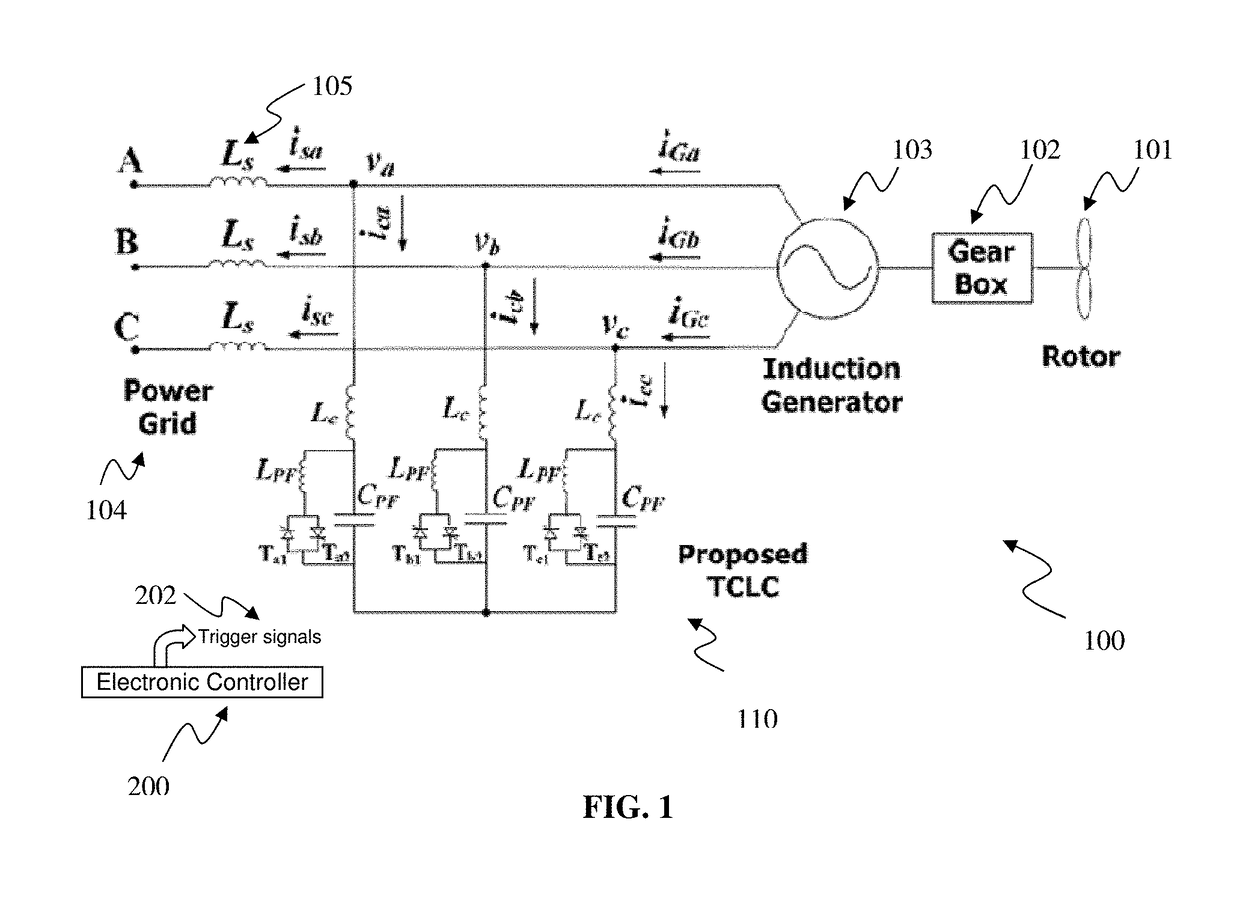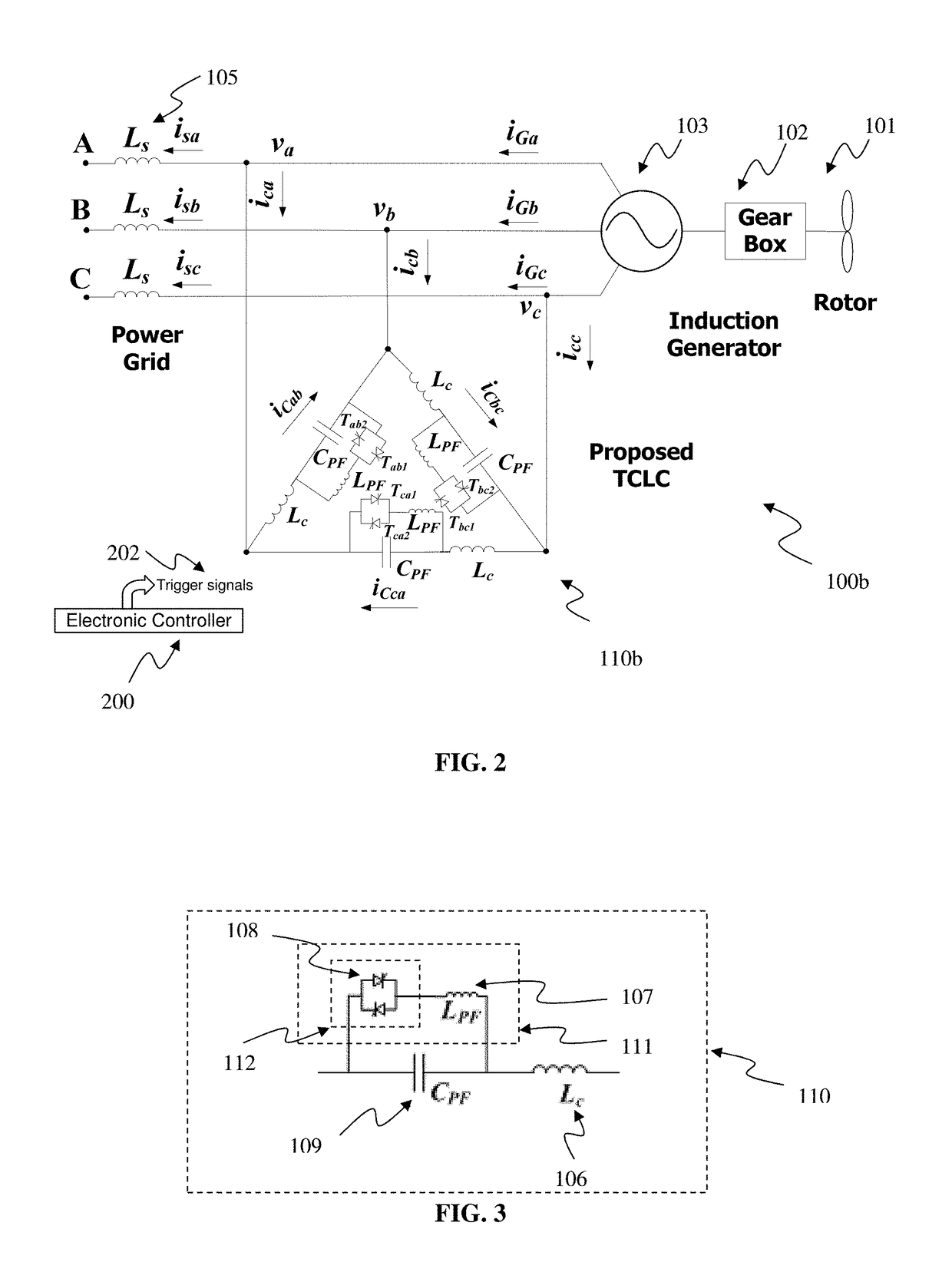Thyristor controlled LC compensator for compensating dynamic reactive power
a dynamic reactive power and compensator technology, applied in the direction of electric power transfer ac network, harmonic reduction/ripple reduction, etc., can solve the problems of increasing operating costs or reducing transmission capacity, reactive power is a major issue, and the development of a smart grid presents many new challenges with respect to power quality
- Summary
- Abstract
- Description
- Claims
- Application Information
AI Technical Summary
Benefits of technology
Problems solved by technology
Method used
Image
Examples
Embodiment Construction
[0052]The following definitions are used herein in the specification and the appended claims. “TCLC compensation system” is used to represent a three-phase three-wire power grid system with a TCLC compensator, disclosed herein, connected thereto for compensating for reactive power. “Power grid system” is an interconnected network for delivering electricity from an electricity-generation source to consumers, wherein the electricity-generation source is referred as a “power source”. An example of the power source is a renewable energy source. The preferred application of the present disclosure is wind farm. In certain embodiments, the power grid system is a three-phase system in electricity transmission. Practically, it is common that three phases are used in the power grid system. “System frequency” is the line frequency or nominal frequency of the oscillations of alternating current (AC) in a power grid system, which is typically at 50 Hz or 60 Hz. “Line” in a power grid means any o...
PUM
 Login to View More
Login to View More Abstract
Description
Claims
Application Information
 Login to View More
Login to View More - R&D
- Intellectual Property
- Life Sciences
- Materials
- Tech Scout
- Unparalleled Data Quality
- Higher Quality Content
- 60% Fewer Hallucinations
Browse by: Latest US Patents, China's latest patents, Technical Efficacy Thesaurus, Application Domain, Technology Topic, Popular Technical Reports.
© 2025 PatSnap. All rights reserved.Legal|Privacy policy|Modern Slavery Act Transparency Statement|Sitemap|About US| Contact US: help@patsnap.com



